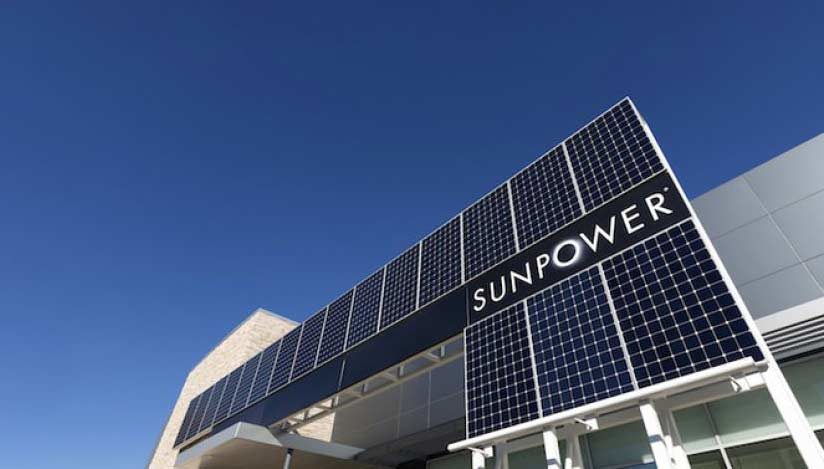Building Solar Panels is a Dirty Business – Why Sustainability Matters
Solar power’s popularity has continued to increase for the last several years, despite costly tariffs and other efforts to bolster traditional fossil fuel industries. There’s a key reason for this. With old forms of power, you consume a finite resource every time you need electricity. Every time you flip on the light switch, you burn gas, coal, or oil to generate the electricity you need and you have to deal with the pollution that results.
Solar power is a one-time deal. Once you’ve invested the money and resources into the manufacture of solar power modules, you get to coast for the next several decades. That’s huge—no traditional energy source can match the efficiency of solar panels.
Despite these advantages, there are still environmental concerns. Manufacturing solar panels, like any other type of electronic device, is a dirty business. The process uses toxic chemicals, releases pollutants, and consumes valuable resources.
That’s why SunPower is trying to reduce the environmental impact of manufacturing solar panels, in order to make solar sustainable during production and in use.
Manufacturing solar panel semiconductors consumes massive amounts of water.
If it weren’t for semiconductors, we would be stuck in the 1950s. Your phone, computer, car, television—they all contain semiconductors. They are the beating heart of our computerized society, allowing our devices to ‘think’ and interact with one another.
Solar panels are no exception. In fact, solar panels use a massive amount of semiconductors, which absorb sunlight and begin the process of producing usable electrical energy.
But what most people don’t know is that manufacturing semiconductors consumes massive amounts of water. Manufacturing a one-foot wide wafer of semiconductors, about 0.75 square feet in area, consumes about 2,200 gallons of water. A typical solar power installation needs several square feet of semiconductors.
A single, decent-sized semiconductor fabrication facility can consume nearly 5 million gallons of water per day, or 1.75 billion gallons per year. For perspective, that’s more water than Sacramento, which has a population of more than 500,000 people, uses in any single month between November and March. Now consider that demand for solar systems requires many such facilities all over the country, all using water at this astonishing rate. You can see the need to find ways to improve upon the manufacturing process!
This is why SunPower’s research facility in Silicon Valley has been dedicated to finding ways to reduce the amount of water needed to fabricate semiconductors and other elements used to build solar panels. They are also working on methods to reduce the amount of electricity needed during manufacturing, ensuring that panels are more energy efficient even before they roll off the assembly line.
Solar panels—like other electronic devices—contain a lot of nasty chemicals and require custom recycling solutions to prevent pollution.
Manufacturing solar panels requires the use of exotic and sometimes toxic materials, some of which are incorporated in the solar panels themselves. Chief among these potential pollutants are:
Cadmium telluride. This heavy metal is particularly handy for manufacturing certain types of solar cells. While the toxicity of cadmium telluride has been reduced in recent years, it’s still a mild carcinogen that can contaminate the environment if improperly disposed of.
Copper indium gallium selenide. Another useful material with valuable semiconducting properties, copper indium gallium selenide and other indium compounds used in solar cell manufacturing are known to cause lung damage.
Lead. While usage of this metal, which is a neurotoxin, has been significantly decreased in recent years, it’s still used in the manufacture of some solar panels.
Then there are toxic chemicals like sulfur hexafluoride, silicon tetrachloride, and others which aren’t present in the panels themselves, but which are used during the manufacturing process or are produced as a byproduct. SunPower has been endeavoring to reduce the usage of toxic chemicals in the manufacture of solar panels, as well as the amount of such materials present in the final product.
These efforts have paid off. Since 2013, the Silicon Valley Toxics Coalition (SVTC) has scored solar power manufacturers on their efforts to reduce the usage of toxic materials in solar panels, as well as the reduction of chemical usage during the manufacturing process. Every year, SunPower has achieved the maximum possible scores.
In fact, on the SVTC’s 2015 and 2016-2017 scorecards, SunPower has been the overall top-rated manufacturer in the photovoltaic industry—a recognition of its efforts to protect employees, customers, and the environment. The 2018 scorecard is due to be released sometime in 2019, and we’re eager to see if they continue to top the list.
Despite the progress made, SunPower recognizes that existing solar panels still contain potentially dangerous amounts of toxic materials. That’s why SunPower operated its own specialized panel recycling program for many years, before joining the Solar Energy Industries Association’s (SEIA) nationwide recycling program. Through this program, a network of collection points has been developed. Vendors that can break down and recycle solar panel components in a safe and sustainable manner have been identified, preventing these materials from contaminating our landfills.
But SunPower isn’t satisfied with ensuring that solar panels are diverted from American landfills. SunPower is one of only two companies to offer recycling solutions in the world.
This is just another reason why we’re proud to be a dealer of SunPower products, and regularly recommend them to our customers. It’s our hope that SunPower continues to push further in their efforts to not only clean up their own manufacturing processes, but to push the industry as a whole towards cleaner, more efficient, and more environmentally sustainable fabrication solutions.

